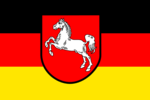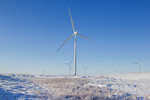Global hydrogen pipeline surpasses 1 TW as European dominance challenged
- Europe’s dominance of the emerging global hydrogen market is being challenged—the region’s share of the global electrolyser project pipeline1 has fallen to 56%, down from 63% in October 2022, while electrolyser manufacturing capacity outside of Europe is set to surpass production in Europe by 2025.
- European hydrogen demand is on track to grow rapidly over the next few decades, allowing a liquid wholesale market to form; prices will fall over time as import and intra-regional transport infrastructure buildout accelerates, with the average wholesale low-carbon hydrogen price in Europe dropping from 7 €/kg in 2025, to 2.8 €/kg in 2050, Aurora’s new European hydrogen market model shows.
As consensus around the need for swift decarbonisation grows and the global race to Net Zero speeds up, so does the race to produce hydrogen. The prospective zero-emission alternative to fossil fuel usage in multiple economic sectors has benefitted immensely from the drive to reduce reliance on fossil fuel imports over the past year, adding new value to hydrogen production and new impetus for buildout. Despite inflationary pressures and increasingly challenging raw material markets, the capacity of planned electrolyser projects across the world has risen to 1,125 GW, the latest edition of Aurora’s global electrolyser database shows. The global pipeline has risen by 168 GW—or 18%—since the previous edition was published in October 2022.
Installing 1 TW of electrolyser capacity remains a distant reality: 86% of the global pipeline is in the early planning stage of development, meaning projects lack key details such as specific locations, technology providers or target milestone timelines, and only 1% of the pipeline is in construction. Projects planned to be operational by 2030 total 269 GW capacity, up by one third since October 2022. Operational capacity today totals just 450 MW. Europe remains the most popular prospective location for electrolysers, accounting for 56% of projects that have advanced beyond the early planning stage, but its share has fallen from 63% in the previous edition of the database, signalling challenges to its popularity. The region with the largest pipeline capacity increase since October 2022 is North America, with Europe in second.2
Global electrolyser manufacturing capacity is on track to reach 48 GW/yr in 2025, Aurora calculates, 60% higher than planned capacity six months ago. EvolOH, a US-based manufacturer, now accounts for the largest share of projects planned to be operational by 2030, at 22%. Belgian conglomerate John Cockerill follows with a 9% share. The total cumulative capacity of planned manufacturing projects has almost doubled since October 2022, rising to 410 GW by 2030, from 231 GW by 2030, and surpassing the capacity of electrolyser projects planned to be operational by 2030 by 38%. The new additions are challenging Europe’s traditional dominance of the sector—the region will lose its majority share of manufacturing capacity in 2025, Aurora finds. Europe’s share of cumulative manufacturing capacity by 2030 has fallen to 40%, from 67% in October 2022.
The challenges to Europe’s position in the global hydrogen and electrolyser supply chains have not impacted the steep upward trajectory of European hydrogen demand. Total hydrogen consumption in the region is on track to rise by 60% by 2030, and more than threefold by 2040, compared to 2023, Aurora forecasts. The influx of supply and demand over the coming decades, as well as plans to deploy an extensive transport network,3 will allow the region to develop a liquid wholesale hydrogen market, shifting pricing structures from bilateral agreements between producers and consumers to marginal pricing models, where the hydrogen price in each area of Europe is determined by the most expensive source required to meet demand.
The average wholesale low-carbon hydrogen price will fall from 7 €/kg in 2025, to 2.8 €/kg in 2050, Aurora’s new European hydrogen market model shows. The decline of electricity prices across the continent, driven by the expansion of renewable power generation capacity, will drive the average low-carbon hydrogen price down in the late 2020s. In the longer term, prices fall as imports enter the supply mix and displace more expensive domestic production from the market, Aurora finds.
Anise Ganbold, Head of Research, Hydrogen, Aurora Energy Research, commented: “Amidst the continuing war in Ukraine and inflationary pressures, investments in hydrogen have proved resilient, as seen in the 18% increase in the electrolyser project pipeline in the last six months.”
Dilara Caglayan, Research Lead, Hydrogen, at Aurora Energy Research commented: “The decreases in Europe’s shares of electrolyser pipeline and manufacturing capacity are a direct consequence of the bloc’s slow response to the US Inflation Reduction Act and delay in developing concrete regulation for renewable hydrogen.”
Aurora’s global electrolyser database is published with the biannual European Hydrogen Market Attractiveness Report. Get in touch to find out more about European hydrogen subscription analytics.
Aurora’s free, public report “A traded hydrogen market in Europe: what will prices and market structures look like?” is available now—request access here.
1 Excluding projects in the early planning stage of development, which Aurora defines as lacking key details such as specific locations, technology providers or target milestone timelines
2 North American pipeline capacity, excluding projects in the early stage of development, has risen by 11 GW since October 2022, while European pipeline capacity has risen by 10 GW.
3 https://ehb.eu/
- Source:
- Aurora Energy Research
- Author:
- Press Office
- Link:
- auroraer.com/...
- Keywords:
- Aurora Energy Research, global, hydrogen, piepline, Europe, USA, China, electrolyser, capacity, green, study, report, manufacturing






















